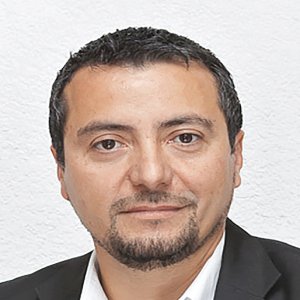Young Airline Grows with Regional Connectivity

STORY INLINE POST
Q: What are the biggest challenges TAR faces with its operations in Mexico?
A: Mexican civil aviation law does not distinguish between different types of airlines. All airlines, from the largest carriers such as Aeroméxico to smaller companies operate under a federal concession that contains the exact same terms. This makes it proportionally much more expensive to be a regional airline.
We have asked for some kind of recognition of the distinction because the regional aviation industry has different requirements to legacy aviation. For example, Unique Airport Tariffs (TUA) do not distinguish between route lengths, making TUAs a restriction to cheaper tickets. We have discussed these problems with DGAC and, while they do recognize these issues, they cannot easily differentiate between the two route lengths to date. Although it might take some time for this system to change, we are sure that it will in the future.
Q: How is the evolution of the Mexican aviation sector influencing the company’s business strategy?
A: Mexico is going through an important stage of development that affects the whole country and that has created new opportunities for the aviation industry. Originally, all legacy carriers in Mexico were founded to cater to Mexico City. TAR, on the other hand, was conceived to draw on opportunities in regional connectivity. We do not impose a specific model on our clients. Instead, we visit each region to ascertain the type of aviation product they need.
The company has divided the country into six strategic regions and keeps the characteristics of each in mind for all routes. We target market niches, including fishermen who go on seasonal leave and retired travelers.
Q: Considering the many locations in which TAR operates, how much of a challenge does local airport infrastructure present?
A: Mexico has fantastic infrastructure for aviation, taking Queretaro Intercontinental Airport (AIQ) as a sound example. There are other solid structures such as the Cuernavaca, Palenque and Chichen Itza airports that are not used for commercial aviation. Those airports need a commercial airline to set up operations because many are a good match for TAR and represent opportunities. Since we fly smaller jets, we do not deal with the same problems that larger aircraft may encounter with airport operations.
TAR does not fly to Mexico City’s airport because it is not part of our strategy. We are trying to define opportunities outside the capital, which is the only airport in Mexico that receives complaints in terms of slots. We do not experience any landing or takeoff slot problems in the airports we fly into. There is much untapped potential in almost all the regions in the country for low-density international operations.
Q: How can regional airlines like TAR Aerolíneas help spur economic development in lesser known regions of Mexico?
A: Since we have a low-density target, it is easier for us to set up flights that larger carriers cannot manage as easily. There is a huge opportunity for TAR to meet the needs of some of the newly developed zones in Mexico, such as connecting the popular manufacturing locations in the Bajio region with northern cities. We are analyzing the strategic component that companies in this location require from the aviation industry and uniting forces with local governments and entrepreneurs to create a plan to cater to this segment.
Local governments and airport groups play an essential role in developing a unified strategy to generate flights to previously overlooked destinations. Authorities must support commercial airlines to strengthen connectivity. This will provide more options for travellers.
To increase our presence, we are taking advantage of technology and we began operating a web-based reservation system as a ticketless company. TAR connects with its customers through technology.
Q: Why does TAR prefer Embraer aircraft over other units to form its fleet?
A: We chose our aircraft after a comprehensive analysis of our target market, for which we implemented an origin-destination and multi-segment structure. Each aircraft makes around eight landings per day, so they have eight daily segments. Embraer aircraft were designed to match this specific type of operation. We transport 50,000 passengers per month but this figure is growing. We plan to increase to 80,000 passengers a month over the next 12 months. In 2017, our target is to fly over 1 million passengers a year.
TAR is a focused project and if we stick to the concept, we will remain in very good shape. Despite the many distractions that exist, we have the conditions to continue down this road. This type of aviation has a lot of potential and that should protect the project.
Q: As a relatively young airline, how does the company balance competition and collaboration with major commercial airlines?
A: Commercial airlines do not pose any competition to our operations because they have different strategies, airplanes and business visions. Therefore, they target different customer segments. We see ourselves as a complement to these legacy carriers and there are significant opportunities for everyone. We plan on collaborating with larger carriers, both local and international, because locating a distribution platform here in Mexico could be beneficial to every player in the industry.
Taking advantage of our strengths in Mexico, we are analyzing the development of an international market, first to the US. We have just received our international certificate from the FAA. TAR operates similarly to a franchise so we would like to look into the possibility of establishing operations in the Latin American market where a need for this type of airline exists. Mexico has been successful in exporting aviation services to the world so we can certainly be successful if we comply with US regulations, which would allow us to compete almost anywhere.
Q: How has your Star Club been received and how has it been growing?
A: We are always looking for ways to add value to our services. Star Club grants our frequent customers specific advantages, such as getting on or off the plane before anyone else. In this type of aviation, we know our customers by name, which creates plenty of opportunities to offer added value in terms of service. Star Club was a great idea that has been very well received. In the future, we want to complement our services with value from other service providers, such as hotels, car companies and so forth.
Q: What are TAR’s next steps to consolidate in terms of growth and expansion?
A: TAR serves 29 national destinations with 10 aircraft. In the short-term, we plan to expand the fleet by 15 or 20 aircraft to cater to existing demand more effectively. In the final quarter of 2016, we will launch our Imagine World operations, which will be strictly focused on business flows arising from this region. The model is focused on business but also targets tourism, which requires good connectivity with North and Central America as well as Europe. The latter destination will operate through the Caribbean.
We want to continue growing, specifically with our Embraer 45 aircraft, and then establish our international operations, which kicked off in summer 2016 with a route from Queretaro to San Antonio. The company will continue strengthening its international presence by increasing its number of aircraft operated to include 90-seater and 70-seater Embraer. These will be used to create direct connections from Mexico to some destinations in the US.
Our internationalization strategy will be defined in 2017. It is a major step forward for us that poses a lot of challenges. The most critical factor in an aviation company is security so we are moving toward getting the AIOSA certification from AIATA, which ensures that TAR complies with all international regulations, processes and certifications.
We also plan to start an MRO near Queretaro’s airport. We want to differentiate our brand through our close contact with customers. We do not treat them as numbers, we treat them as people with specific needs that we need to meet and the company is very focused on providing a high-quality service to all passengers that travel with TAR Aerolíneas.























